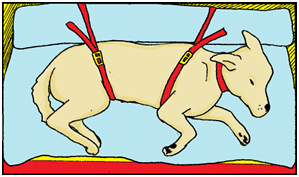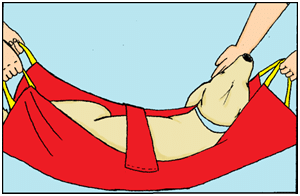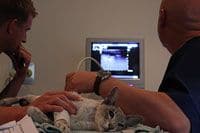Transporting Your Sick Or Injured Pet
Guidelines for safe transportation of sick or injured animals

1. Plan the trip
Make sure you have the phone number and address for both your regular vet clinic and Perth Vet Emergency (your after-hours hospital) in an obvious location so you can find them quickly if you need to. It is also a good idea to familiarize yourself with the quickest and easiest route to the vet so you can get there as efficiently as possible.
2. Minimise pet handling

3. Handle your pet with caution and care
Rough handling or restraint may cause further damage to an injury, particularly internal bleeding, and soft tissue around a fracture. Ensure you handle your pet gently and at all times.
4. Minimise pet movement
Treat all major traumas (e.g. car accidents) as though they have a spinal injury. If your pet is unconscious or paralysed, use a firm, flat support for transportation. Common household items such as ironing boards and cupboard doors are suitable.
To transfer your pet onto the support, keep the back and neck as straight as possible, grab the skinover the back of the neck and over the small of the back and gently slide them on to the support. Hold gently or lightly tie or your pet to the support for transport.
If your pet starts to struggle, you will need to find another method of transport. A large blanket can be used as a stretcher.
5. Drive Carefully!

If you are delayed due to erratic or careless driving (such as being stopped for speeding by the police), you risk your pets chances of survival. Most first aid principles such as appropriate planning and preparation, together with an awareness of proper techniques will prevent many problems.



